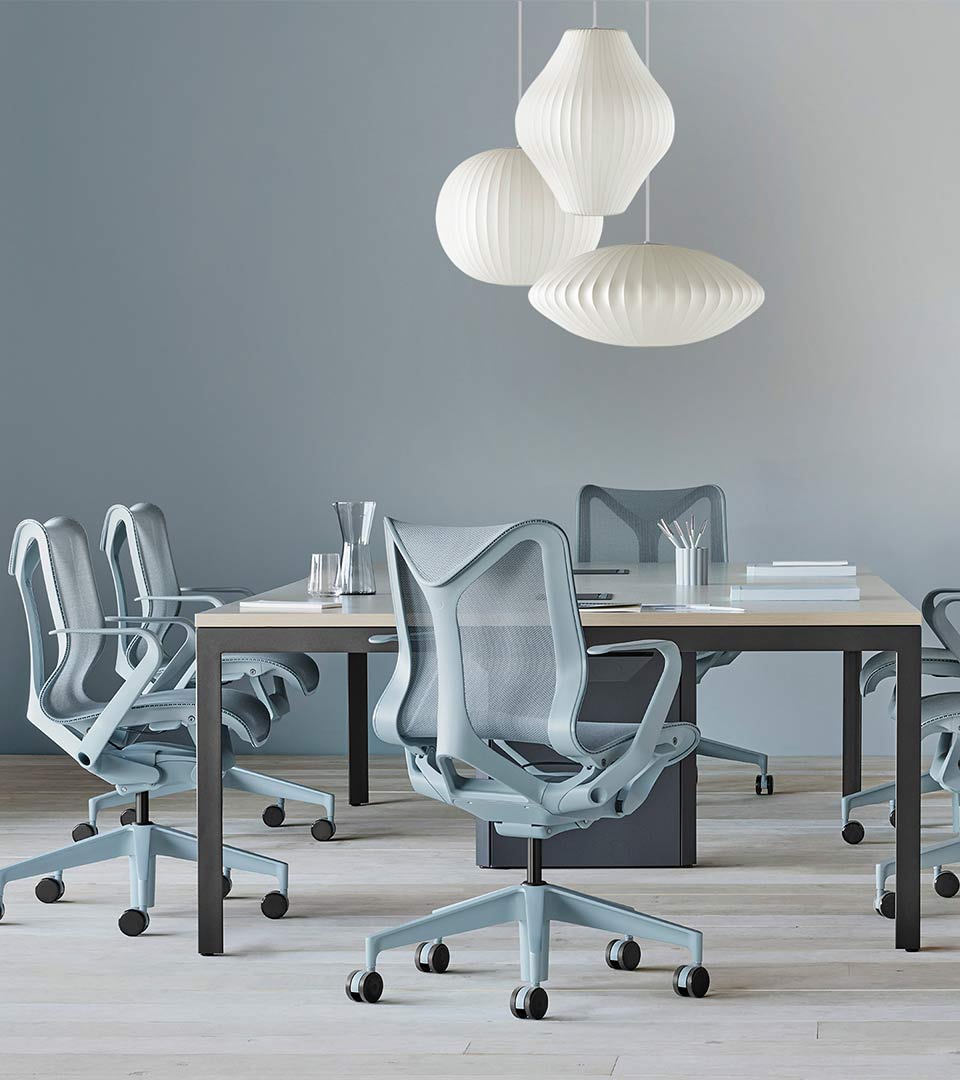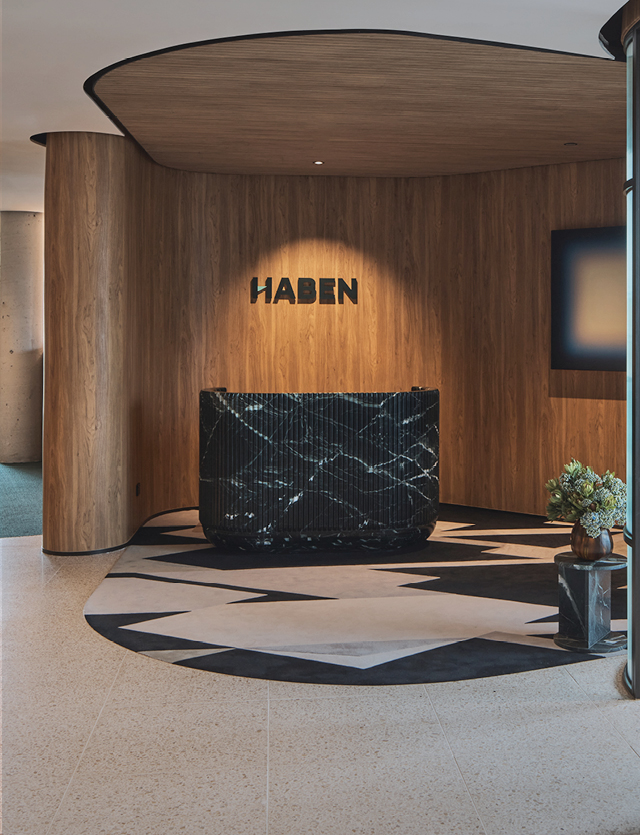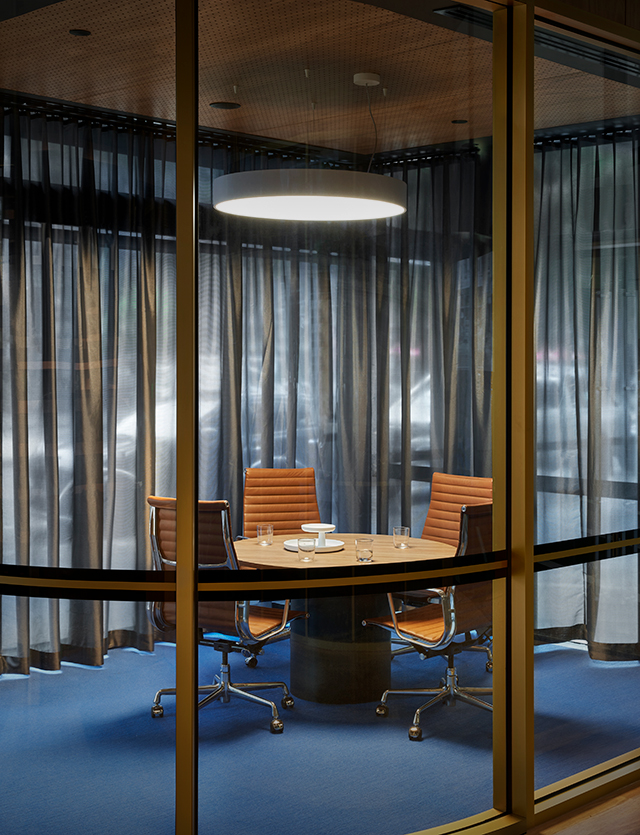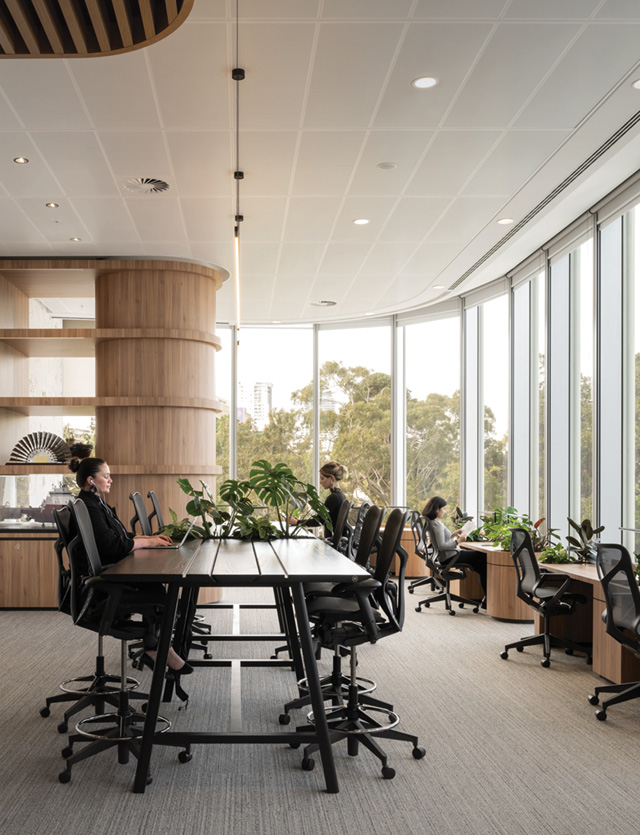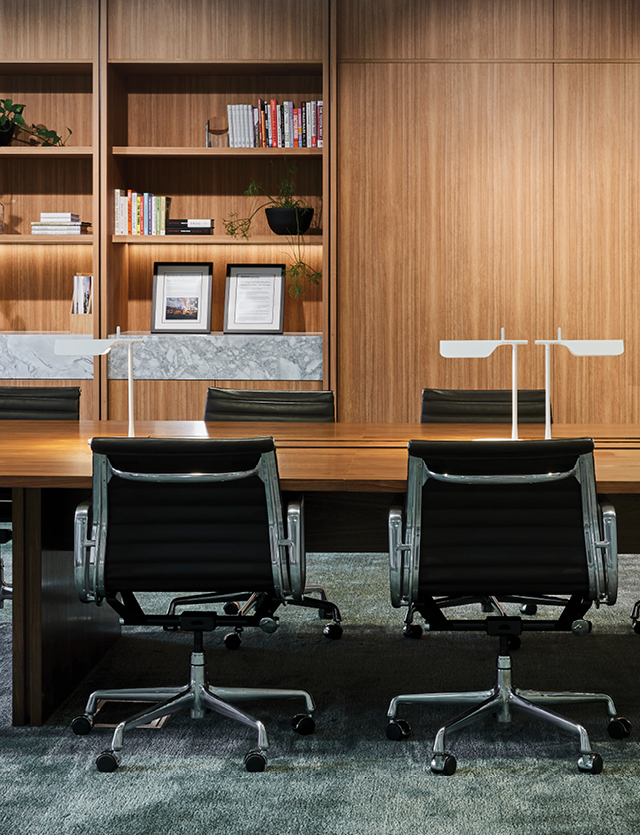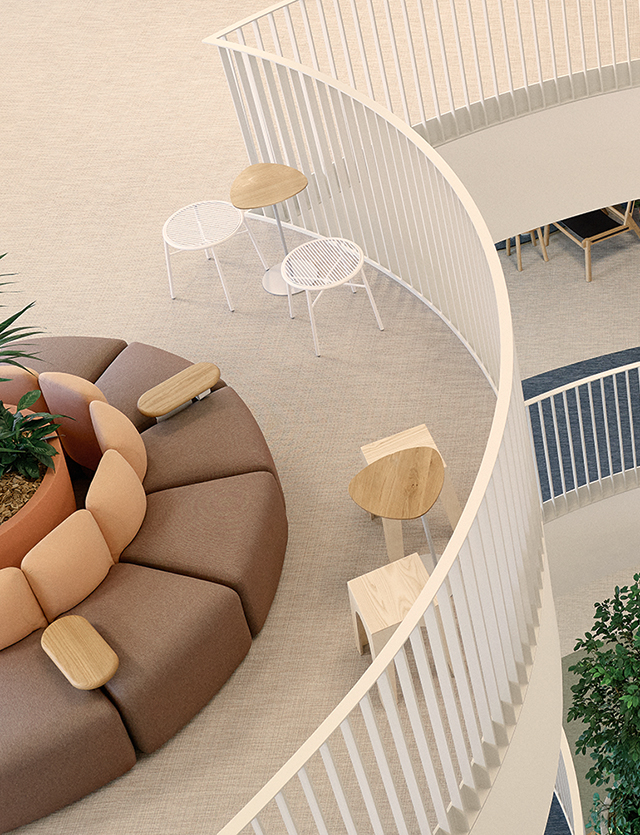The Embassy of Australia in Washington D.C. is one of the country’s largest diplomatic presences. For the interior, a collaboration with the Design Institute of Australia identified a number of leading furniture designers from Australia, whose pieces embody an informal, future-forward and distinctly Australian aesthetic.
The Australian Embassy in Washington D.C., completed in 2023, marks a significant milestone in the architectural history of Australia's diplomatic buildings abroad. Designed by Bates Smart, one of Australia's oldest architectural firms, the project carries forward the legacy of their earlier work in embassy design, particularly reflecting on their appointment in 1964 as the architects for the original chancery building in Washington D.C.

The original commission in the 1960s represented a pivotal moment for Bates Smart, as it was their first major international commission and it symbolised Australia’s growing diplomatic presence on the global stage. The new design by Bates Smart, replacing the older structure on the same site, aimed to reflect both contemporary architectural trends and the functional needs of modern diplomacy. The 2023 embassy design likely incorporates elements of sustainability, security, and technological integration, which are crucial for contemporary diplomatic buildings. Moreover, the design probably pays homage to its predecessor through stylistic cues or spatial organisation, thereby maintaining a connection to its historical context.
“The Embassy’s monolithic form was inspired by Australia’s iconic landscape and embodies the essence of an ancient and vast continent inhabited by the world's oldest continuous living culture. Materiality and light played key roles in expressing the embassy's design. The appearance of the building changes throughout the day depending on the perspective of the viewer.”
- Bates Smart
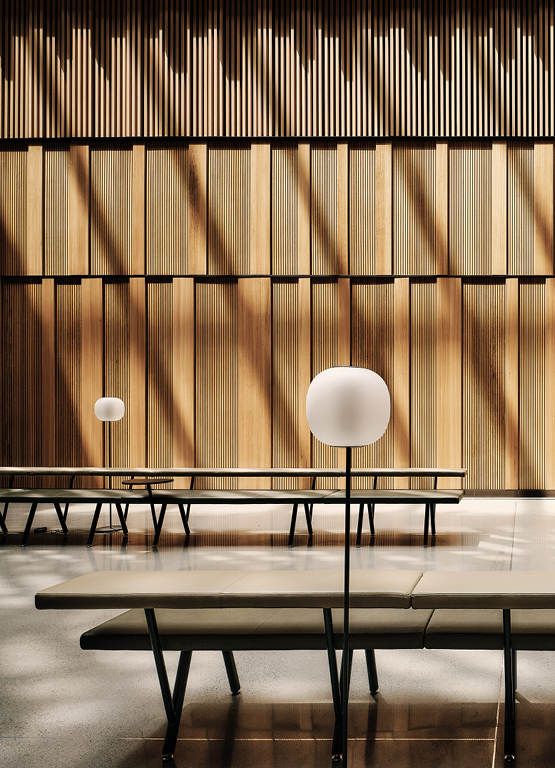
At the heart of the building, a large atrium serves as an organising and orientating space displaying a powerful connection between the ground and the sky. This central atrium gives rise to an axial arrangement of spaces that exhibit a strong sense of materiality. Australian timber is the primary material and expresses a series of textured horizontal bands that transition from rough to smooth.
Derlot's Autobahn design takes centre stage within the impressive space, embodying the fusion of functionality and aesthetic appeal. This particular design by Derlot, a world-renowned Australian furniture brand, is a testament to the country's prowess in innovative furniture design. The Autobahn’s striking features and adaptive configuration perfectly complement the architectural vision of the atrium, creating a dynamic and welcoming environment. The inclusion of Derlot’s work in this significant project not only highlights the brand’s commitment to quality and design excellence but also proudly showcases Australian design on an international platform, enhancing the cultural dialogue between Australia and the global community.

"The interior expresses the unique qualities of the Australian natural environment, the bold textures of our bushland and the soft filtered light which falls upon it."
- Mark Healey, Bates Smart Design Director - Interiors
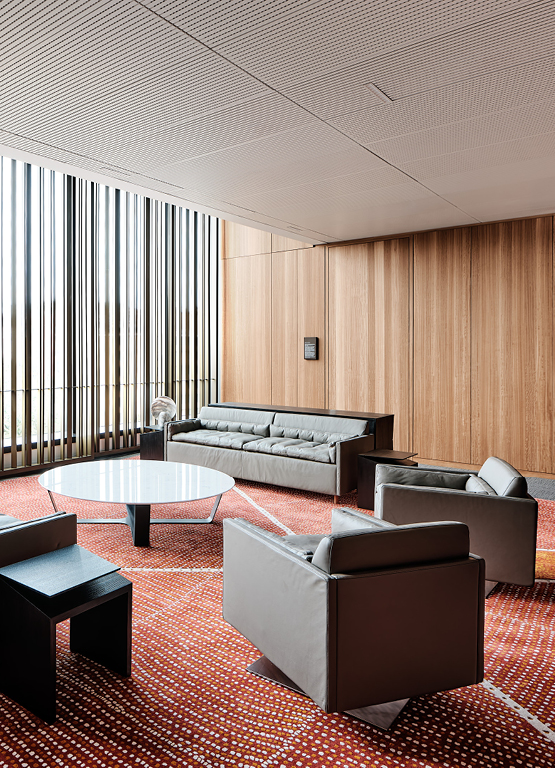
The waiting spaces serve as the threshold to the formal and ceremonial areas and is furnished with bespoke rugs and handcrafted Australian designed furniture. Specialty rugs based on Australian First Nations artworks establish a hierarchy throughout, with a feature rug separated into sections to define the series of key breakout spaces.
Within the head of missions office, BassamFellows Salon sofas and armchairs integrate luxury and comfort. The choice of BassamFellows, known for their refined craftsmanship and sophisticated design, underscores the embassy's commitment to creating inviting and carefully considered environments. Led by Australian-native Craig Bassam and American Scott Fellows, their refined Salon design not only offers a sanctuary for relaxation and informal discussions but also reflect the embassy's modern aesthetic. Their placement in the embassy’s head of missions office speaks to a deliberate approach to marry functionality with high-end design, ensuring that these areas are both beautiful and beneficial.

Agency interactions are actively facilitated by a workspace design that is deliberately equitable. Open workspaces with ample daylighting promote a calm and ordered atmosphere. The U-shaped plan and side core arrangement ensure efficient floorplates, allowing departments to adapt to changing requirements. In the formal meeting rooms, Walter Knoll's Keypiece Conference Tables and Leadchair Management series have been thoughtfully incorporated. The selection of Keypiece and Leadchair for the embassy's meeting rooms marks a deliberate choice for excellence in both design and function. The Keypiece Conference Tables serve as the focal point for discussions, offering a robust yet sleek surface that commands respect and attention. Accompanying these tables, the Leadchair Management add a layer of executive luxury and ergonomic support, ensuring comfort during prolonged meetings.
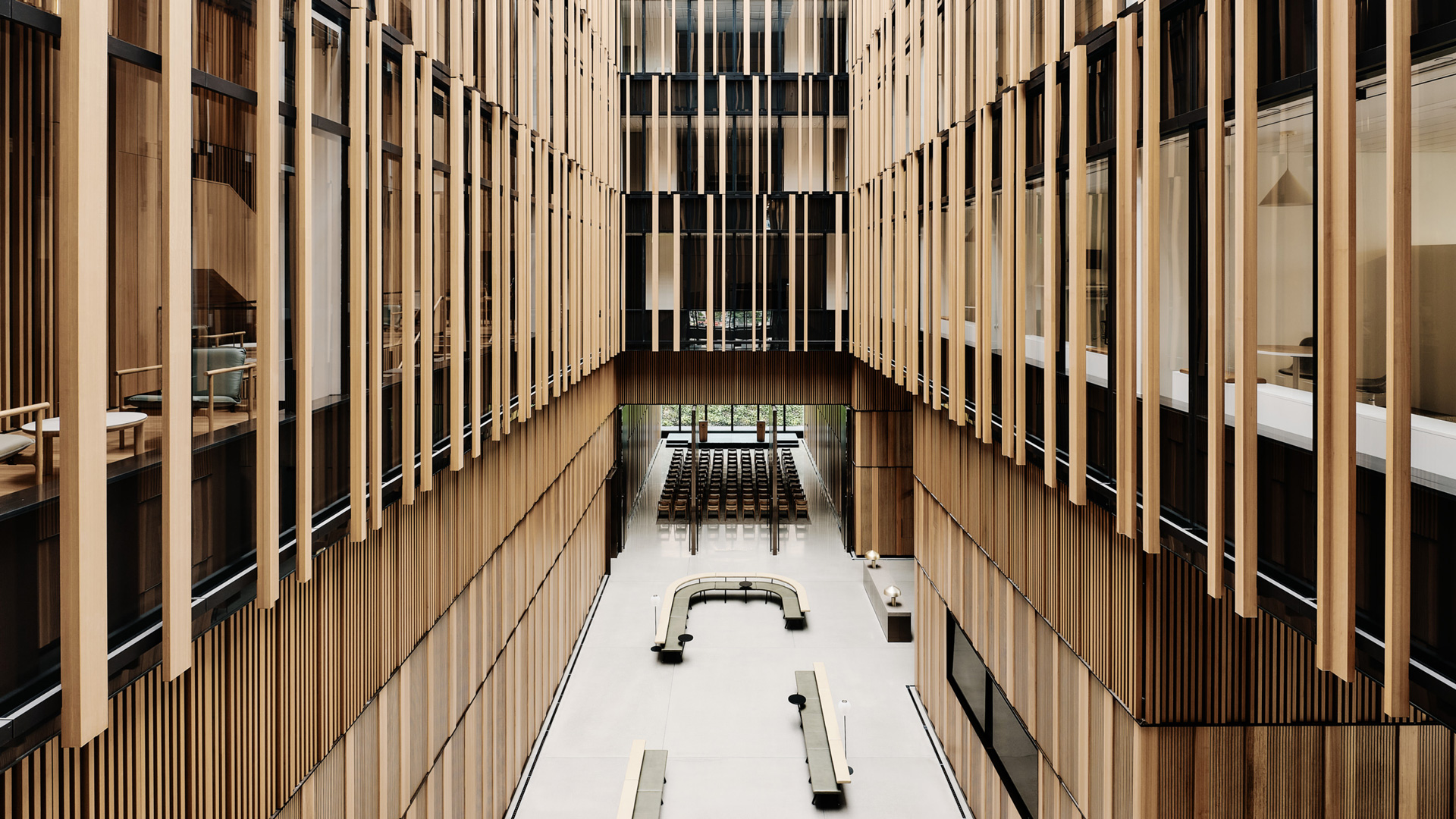
This project not only underscores Bates Smart's enduring relationship with governmental architecture but also highlights the evolution of embassy design from purely functional spaces to complex representations of national identity and architectural innovation on foreign soil. Working alongside such esteemed architectural talent, Derlot, BassamFellows, Walter Knoll and Herman Miller were given the unique opportunity to showcase a commitment to quality, design, and sustainability. This collaboration delivered and installed by Designcraft ACT, highlights our portfolio of brands’ dedication to excellence. It also aligns perfectly with our own vision of sharing international design within our local Australian Furniture market, a co-exchange of great design on the global stage.
Architecture and Interior Design: Bates Smart
Photography: Joe Fletcher

